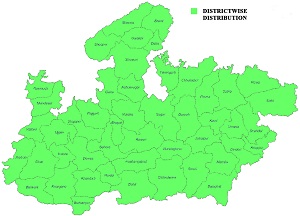| Oligodon arnensis (Shaw, 1802) |
| Common Kukri Snake |
 |
|
Diagnostic characters:
|
| A small snake with a short, smooth and even-sized cylindrical body; tail short and pointed; eyes are moderate with large rounded pupil; rostral broad and enlarged, visible from the top of the head. Light or dark-brown above with well defined cross-bars which are often edged with white markings; whitish below; head and neck with two black inverted typical ”V” shaped markings; a black band on the inter ocular region. SVL: 800mm. |
| Habit and Habitat: |
| Terrestrial, nocturnal and crepuscular. Found in termite mounds, caves, crevices, tree holes and old houses. |
| Diet: |
| Young feed on insects and their larvae, spiders and gecko eggs; adult takes reptile eggs, geckos, skinks and small mice. |
| Legal Protection: |
| WL (P) A, 1972-Schedule IV. |
| Conservation status and Threats: |
| Not accessed. Uncommon. No serious threat observed. |
 |
Distribution: Madhya Pradesh: Throughout. Elsewhere in India: Peninsular India up to Himachal Pradesh. Elsewhere outside: Pakistan, Nepal and Sri Lanka |
|